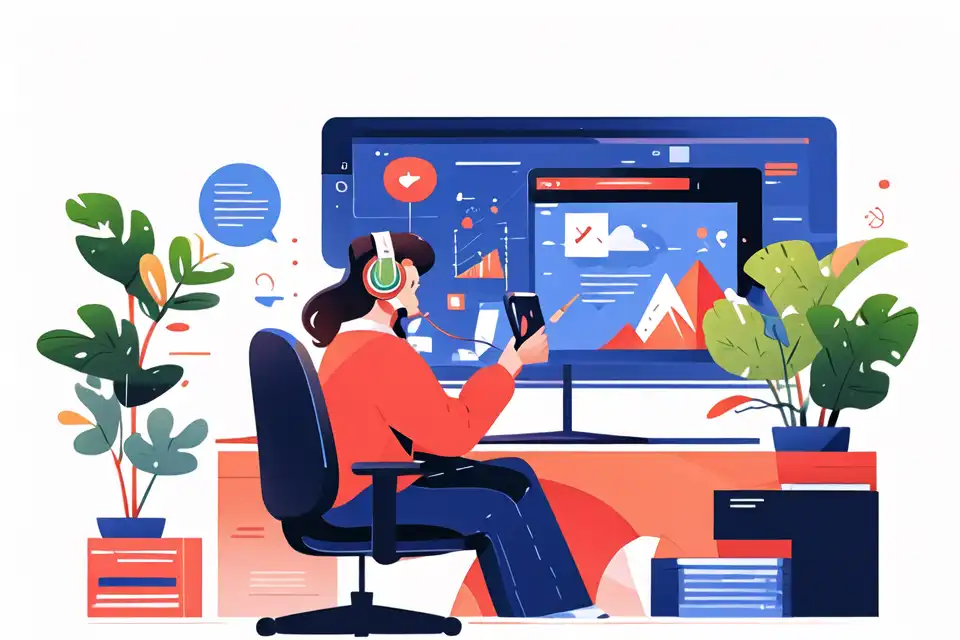Ai Art
Discover a Comprehensive Guide to ai art: Your go-to resource for understanding the intricate language of artificial intelligence.
Try Lark for Free
In recent years, the burgeoning domain of AI art has brought forth a captivating fusion of human creativity and technological prowess. This article delves deep into the intricate world of AI art, offering a comprehensive exploration of its definition, historical evolution, significance in the AI field, operational mechanisms, real-world applications, pros and cons, related terms, and a conclusive summary.
What is ai art?
Artificial Intelligence (AI) has transcended conventional boundaries to permeate diverse sectors, with the art realm being no exception. AI art, also known as computational art, encompasses the incorporation of AI tools, algorithms, and computational models to facilitate the creation, interpretation, or dissemination of art.
The definition of AI art continues to evolve, mirroring the rapid advancements in AI technologies and their integration into creative processes. From generative algorithms to neural networks, AI art embodies an unparalleled synthesis of human ingenuity and computational finesse, propelling artistic frontiers into uncharted territories.
Background and history of ai art
The origin and proliferation of AI art can be traced back to the early instances of computational creativity, where pioneering artists and technologists sought to unravel the potential of programming and artificial intelligence in the realm of artistic expression. Over time, the evolution of AI art has been intricately intertwined with the advancement of machine learning algorithms, leading to a profound metamorphosis in artistic methodologies.
The evolution of AI art over the decades echoes the gradual convergence of human creativity and technological innovation, culminating in an era where the distinction between human-generated art and AI-generated art becomes increasingly nuanced and thought-provoking.
Use Lark Base AI workflows to unleash your team productivity.
Significance of ai art
In the AI field, AI art stands as a testament to the symbiotic relationship between human artistry and computational capabilities. Its significance is underscored by the transformative impact it has on the artistic landscape, both in terms of creative possibilities and the exploration of novel modes of expression.
The integration of AI in art does not merely represent a technological feat; it embodies a paradigm shift in the exploration of artistic concepts and the democratization of creativity.
How ai art works
At the core of AI art lies a sophisticated interplay between creative ideation and computational methodology. Through the utilization of generative models and neural networks, AI art transcends traditional artistic boundaries, enabling the co-creation of art by human artists and AI systems. This synergy results in a diverse array of artistic expressions, ranging from visual art to music compositions, where the creative process becomes a harmonious collaboration between human and machine intelligence.
Related:
Get to know Lark AILearn more about Lark x AI
Real-world applications of ai art
Example 1: ai-generated portraits
Example 1: ai-generated portraits
In the realm of portraiture, AI-powered algorithms have revolutionized the creation of lifelike portraits, seamlessly blending distinct artistic styles and imbuing them with a touch of computational finesse. This transcends the conventional limitations of human artistry, offering a novel perspective on the portrayal of individuals across diverse cultural and historical contexts.
Example 2: dynamic art generation
Example 2: dynamic art generation
AI art is not confined to static imagery; it extends to dynamic art forms, such as generative animations and interactive installations. Through machine learning algorithms, AI art facilitates the creation of dynamic art that evolves in response to environmental stimuli or user interactions, challenging the conventional notion of art as a static entity.
Example 3: ai-infused collaborative art projects
Example 3: ai-infused collaborative art projects
In collaborative art endeavors, AI serves as a catalyst for diverse artists to converge, facilitating a fusion of multilateral creative perspectives. This amalgamation of human artistry and computational ingenuity engenders an eclectic tapestry of artistic expression, transcending individual limitations and fostering a culture of collective creativity.
Use Lark Base AI workflows to unleash your team productivity.
Pros & cons of ai art
Advantages of AI Art
- Augmented Creativity: AI art augments human creativity, offering novel perspectives and innovative approaches that may not have been conceivable through traditional artistic processes.
- Exploration of Novel Styles: Through the amalgamation of diverse artistic styles and computational models, AI art paves the way for the exploration of avant-garde artistic forms that redefine conventional artistic paradigms.
Limitations and Ethical Considerations
- Artistic Authenticity: The proliferation of AI-generated art raises critical questions regarding the authenticity and originality of artistic creations, blurring the delineation between human-authored art and AI-generated art.
- Ethical Implications: The ethical ramifications of AI art encompass issues of authorship, copyright, and the ethical utilization of AI in the creative domain, warranting a comprehensive ethical framework to navigate the evolving landscape of AI art.
Related terms
- Generative Adversarial Networks (GANs): GANs represent a pivotal tool in the realm of AI art, facilitating the generation of strikingly realistic images by pitting two neural networks against each other to refine the quality and authenticity of generated artworks.
- Neural Style Transfer: Neural style transfer leverages deep neural networks to imbue digital imagery with the stylistic characteristics of reference artworks, offering a channel for the seamless amalgamation of artistic styles and visual motifs.
- Computational Creativity: Computational creativity encapsulates the interdisciplinary domain at the intersection of artificial intelligence, cognitive psychology, and the arts, underscoring the mechanistic and cognitive facets of creativity in computational systems.
Conclusion
The realm of AI art stands as a testament to the unyielding fusion of human creativity and technological innovation, culminating in an era where the boundaries between human-generated art and AI-generated art converge. As artistic frontiers continue to expand, AI art will undoubtedly remain at the vanguard of transformative creativity, reshaping the landscape of art and challenging conventional artistic paradigms.
